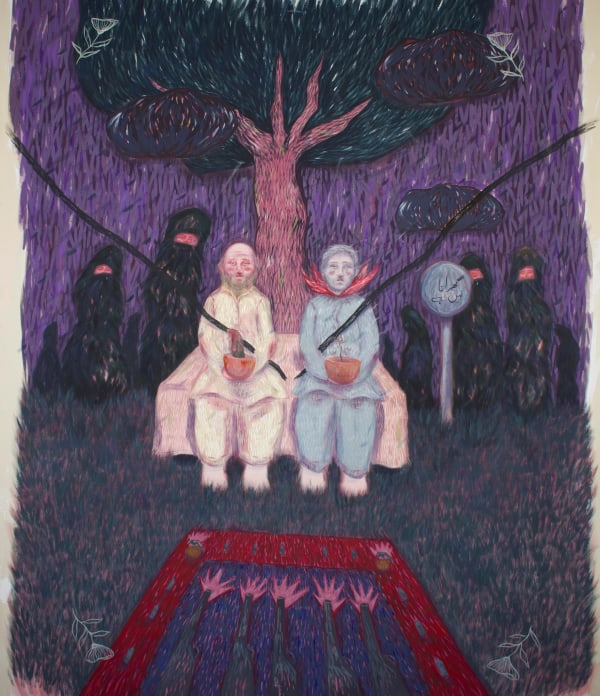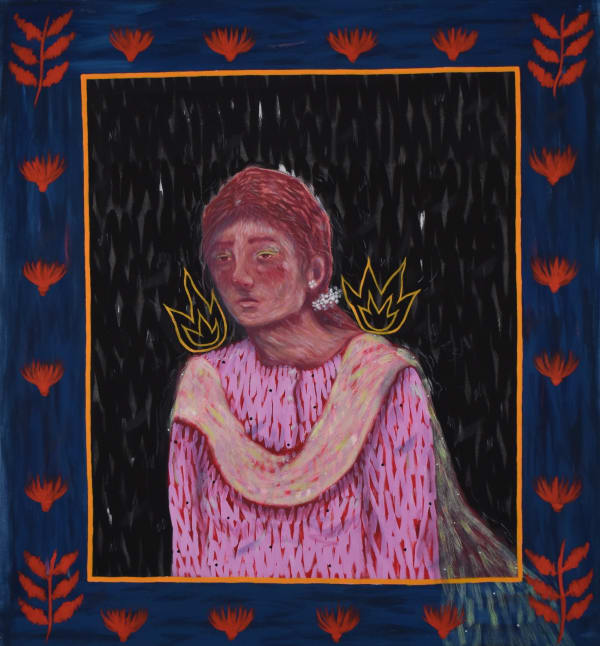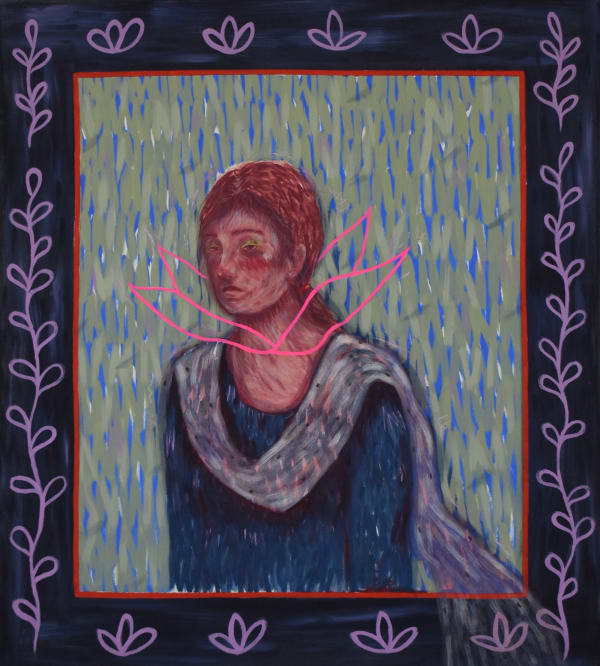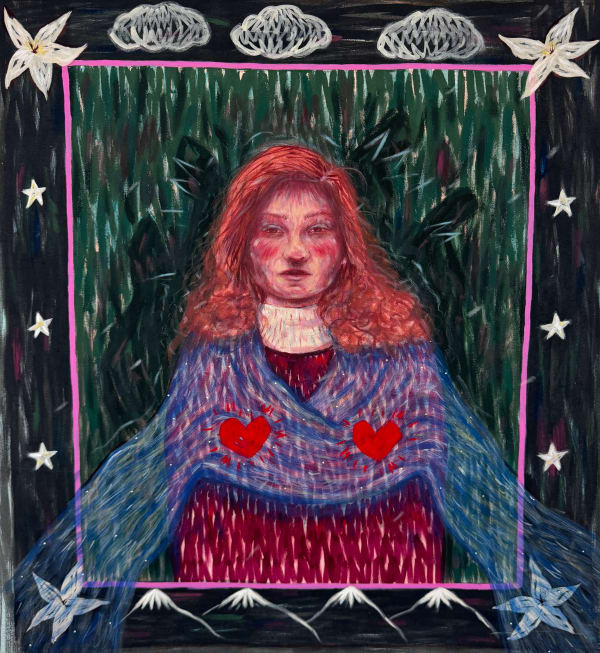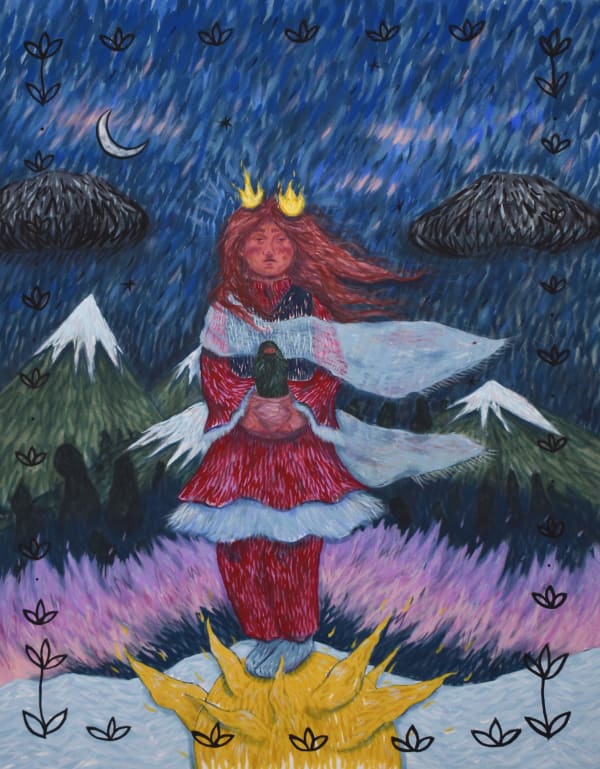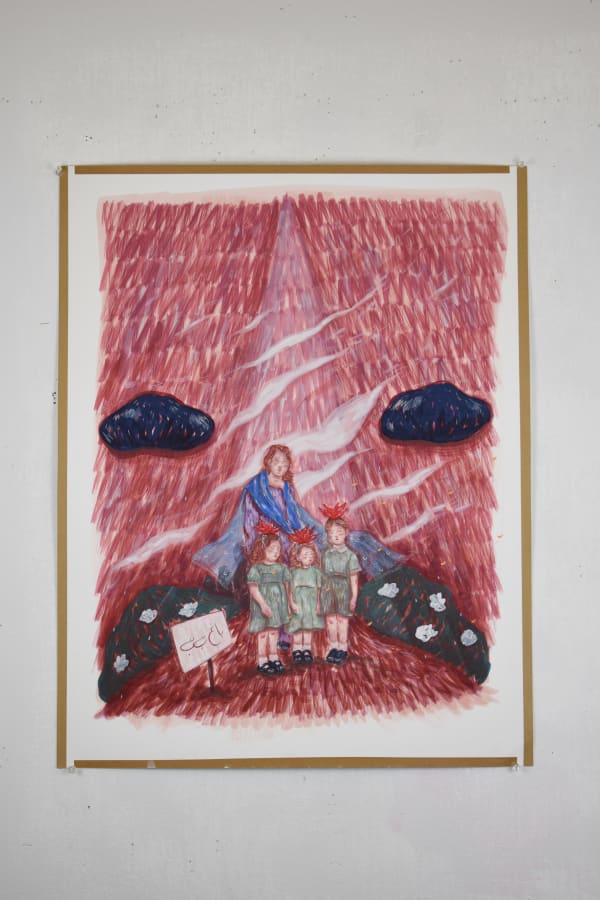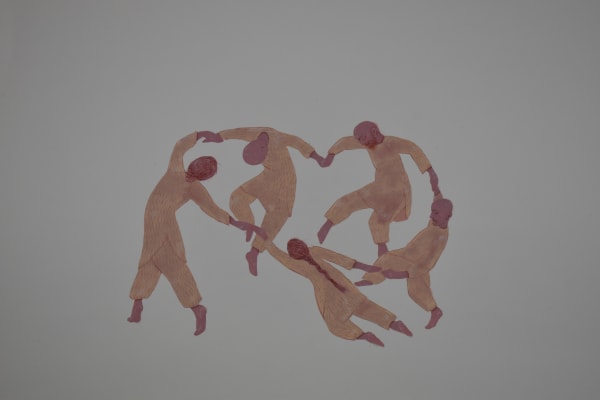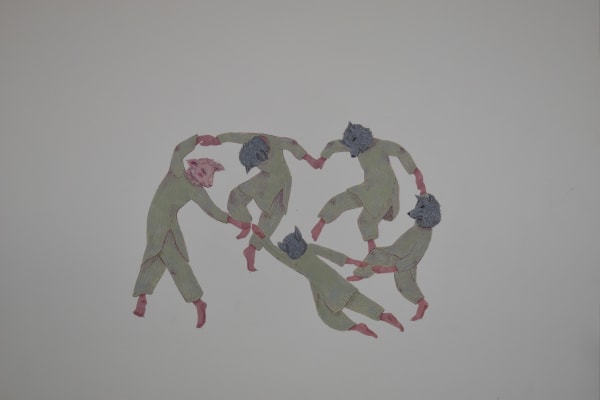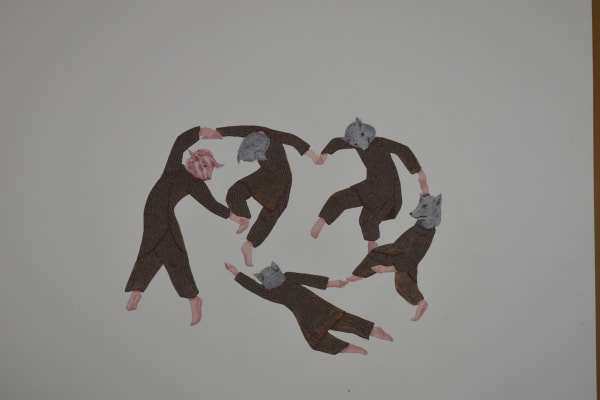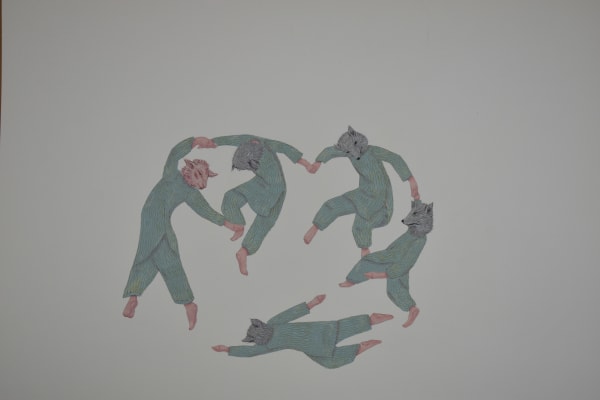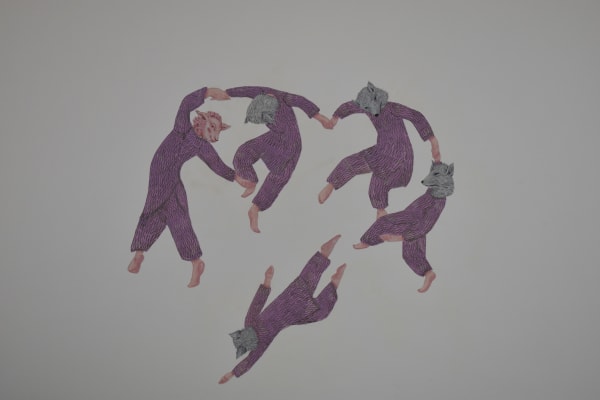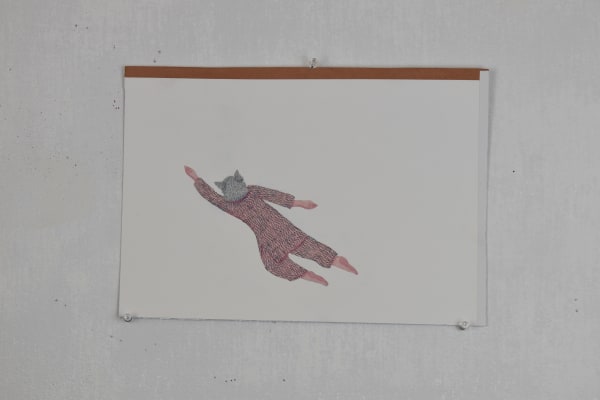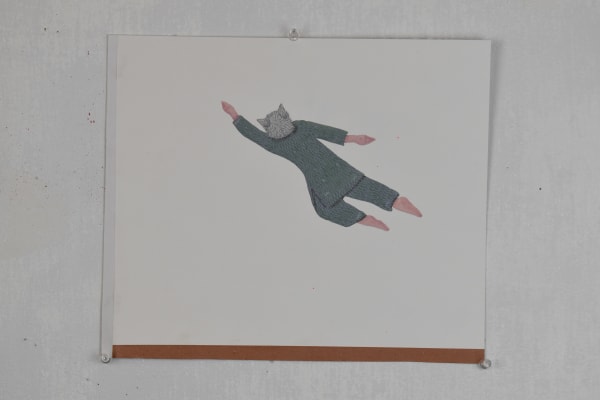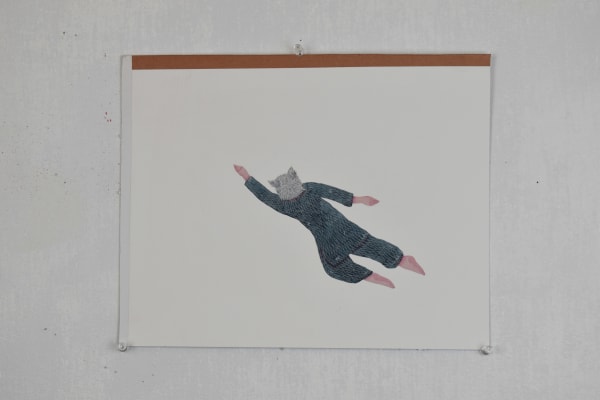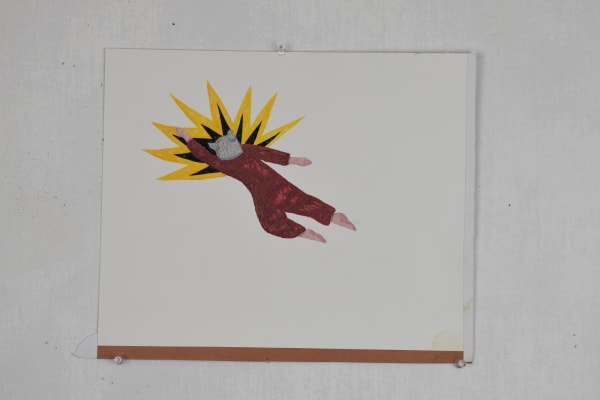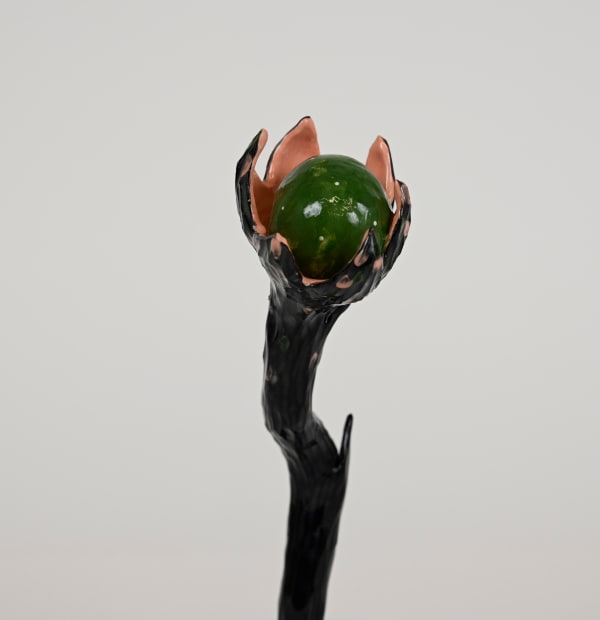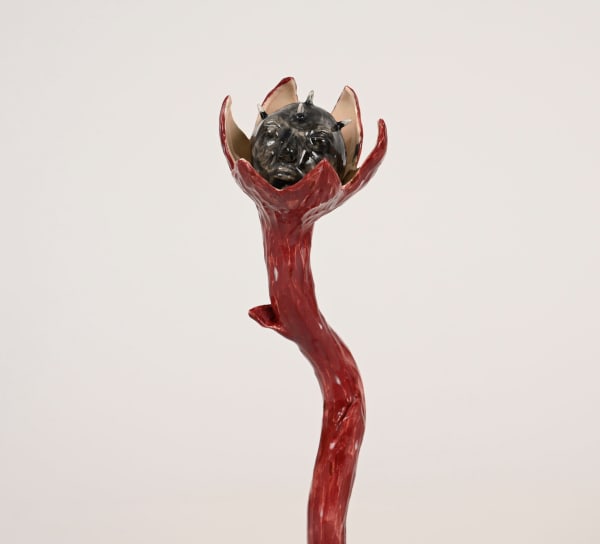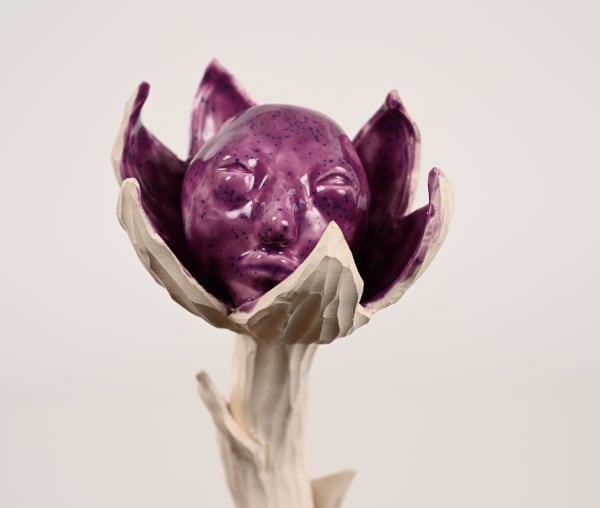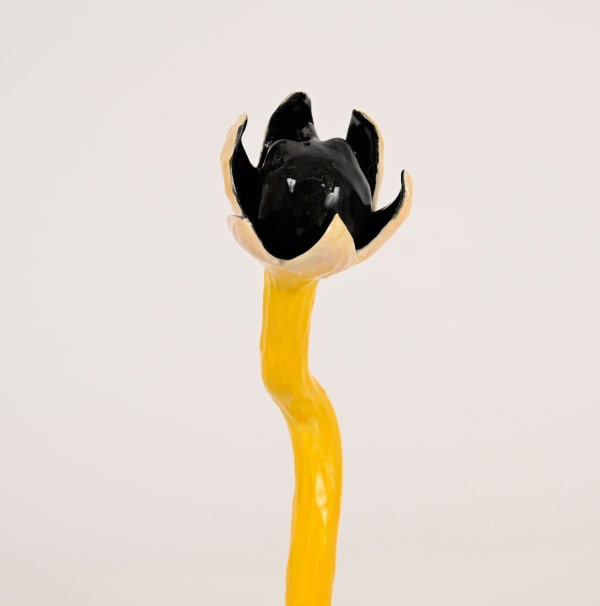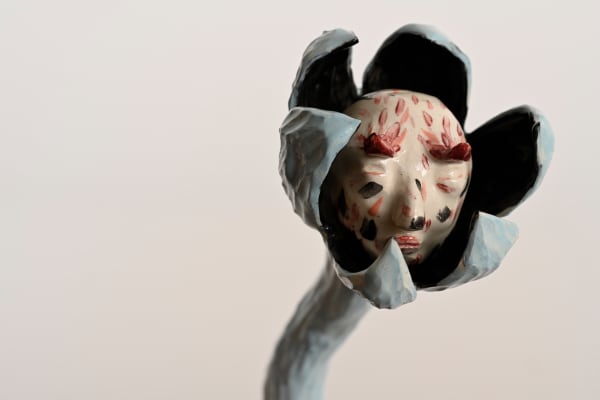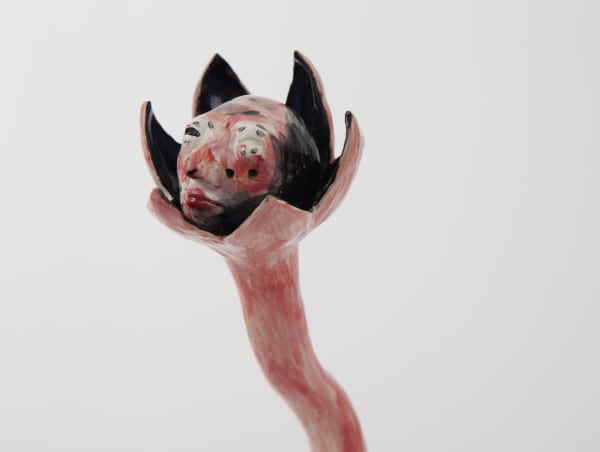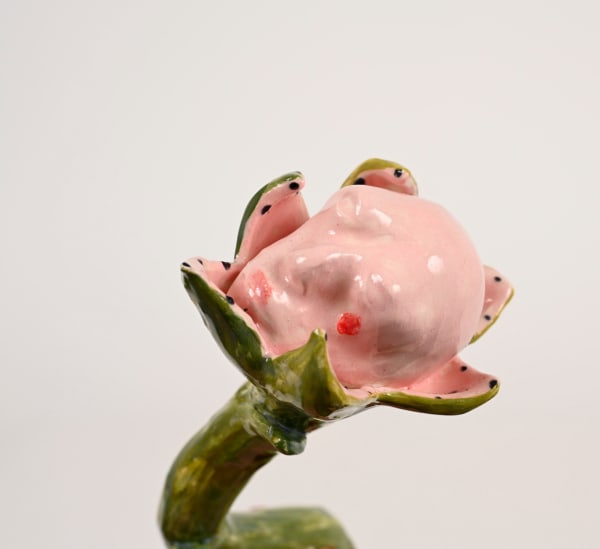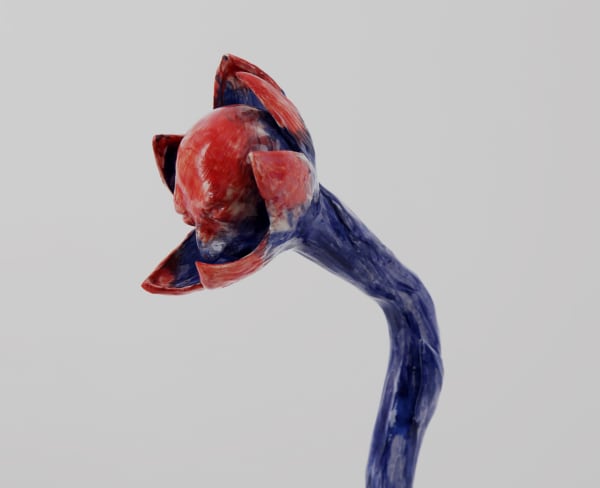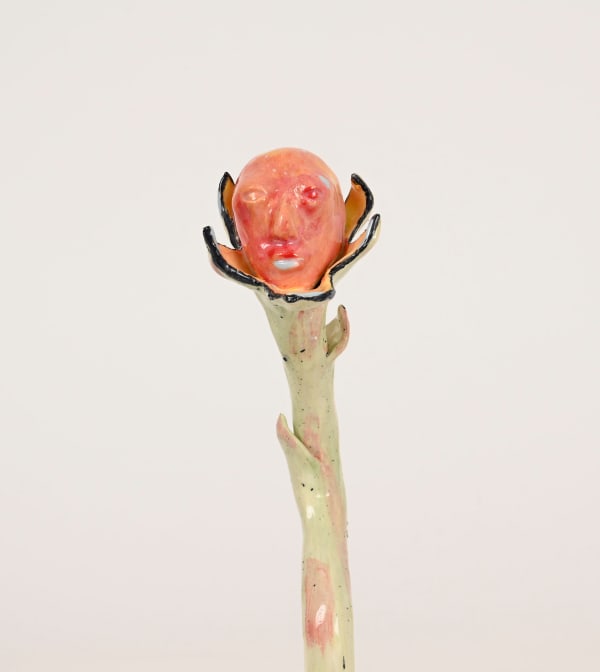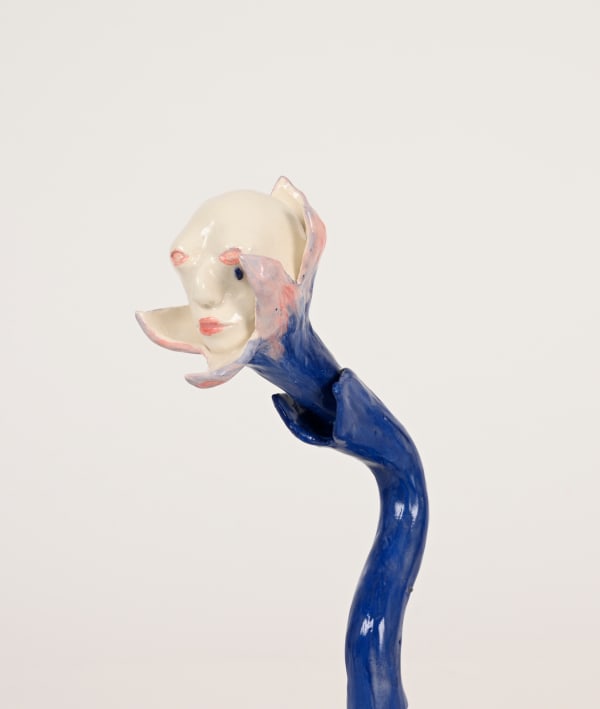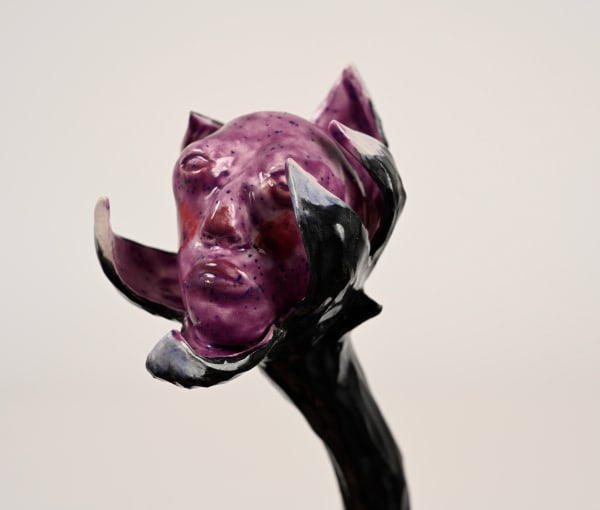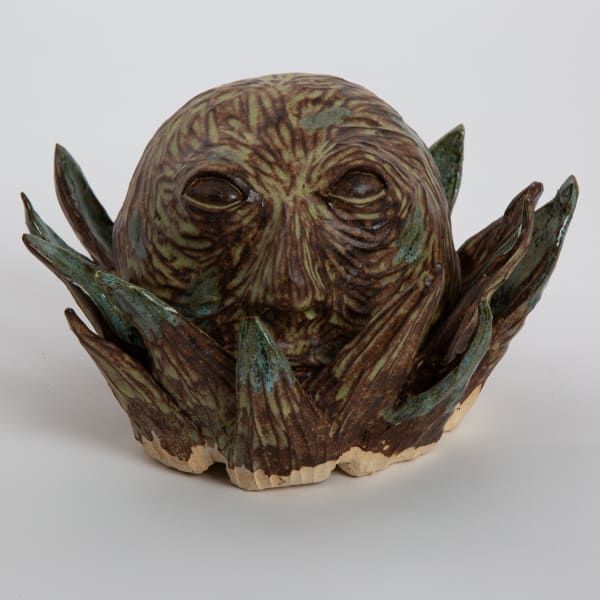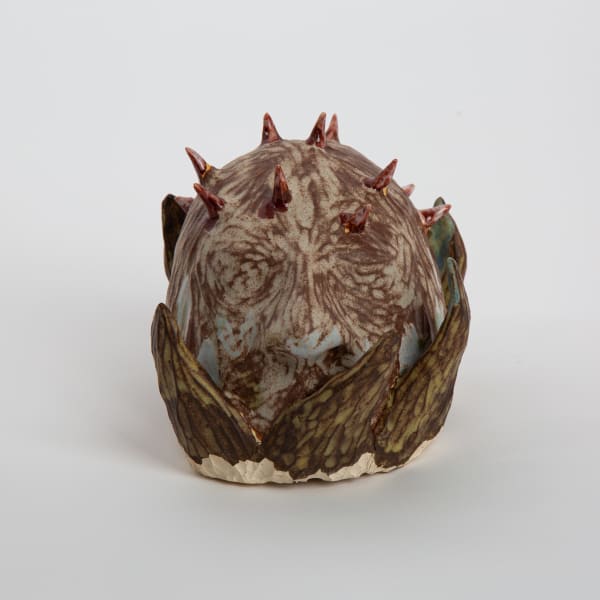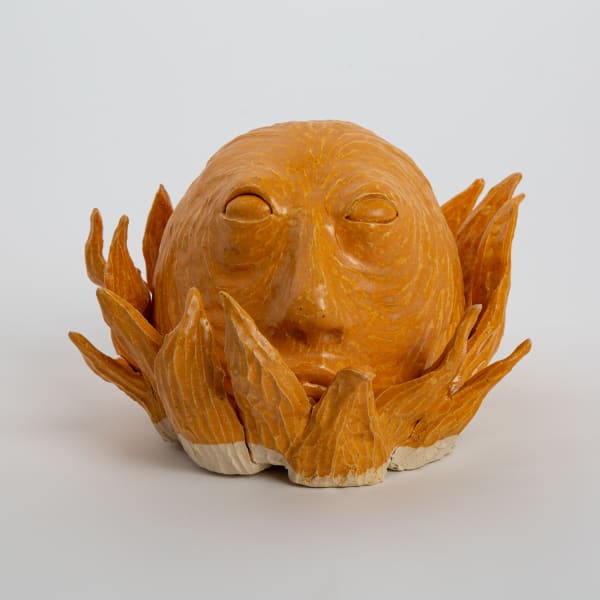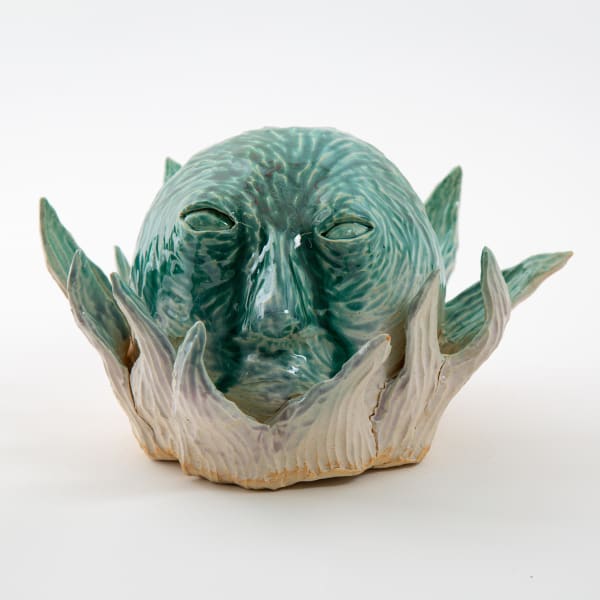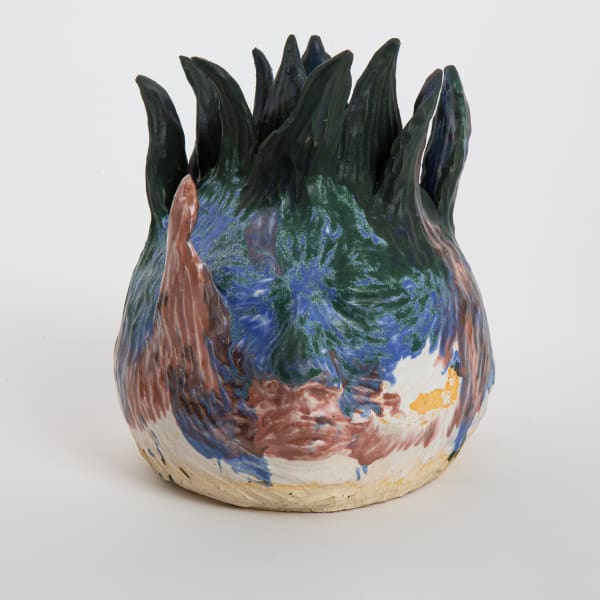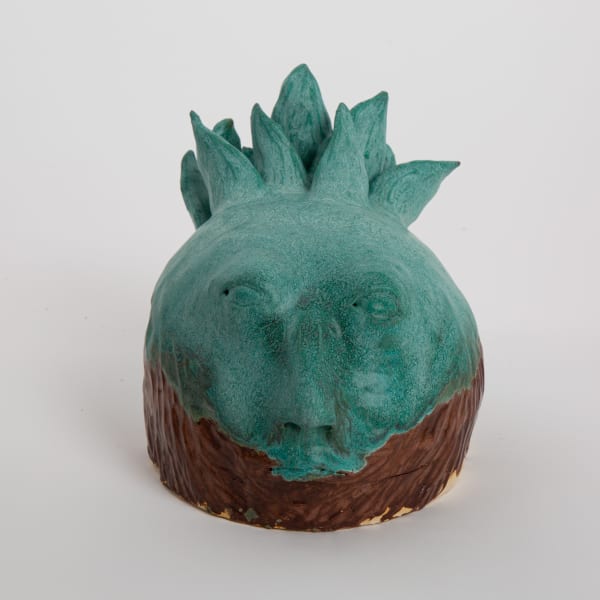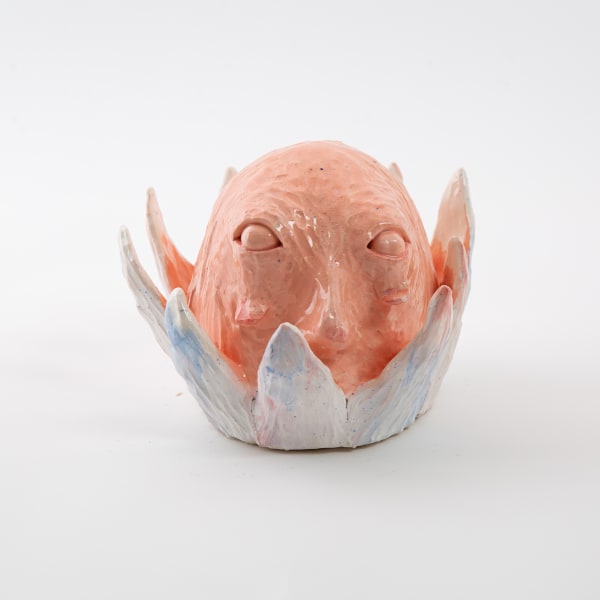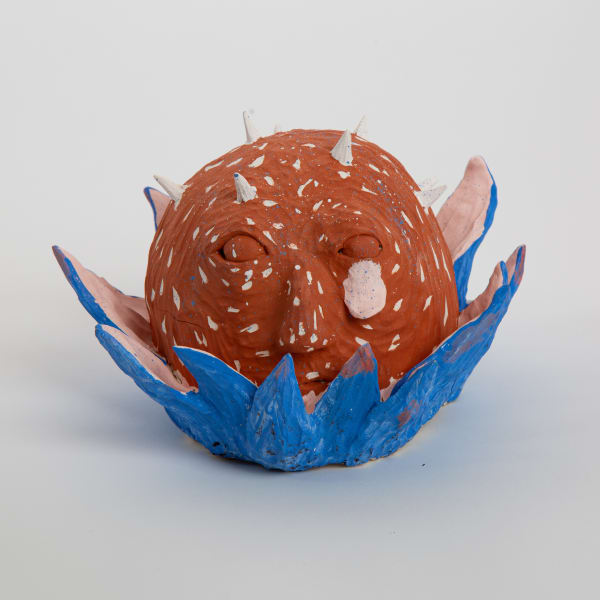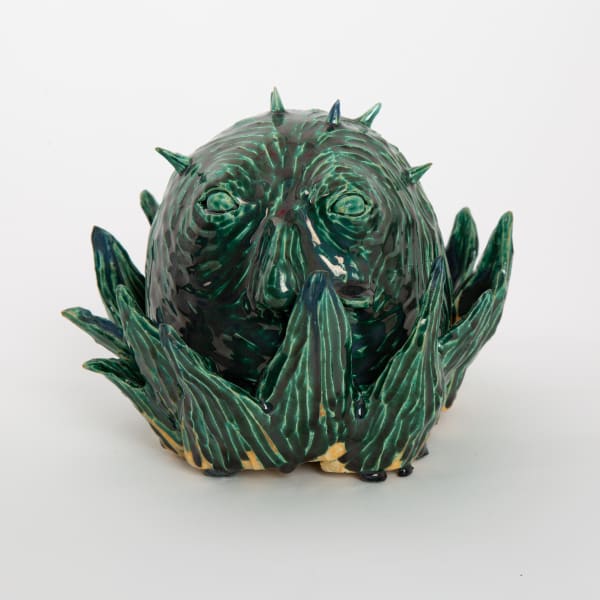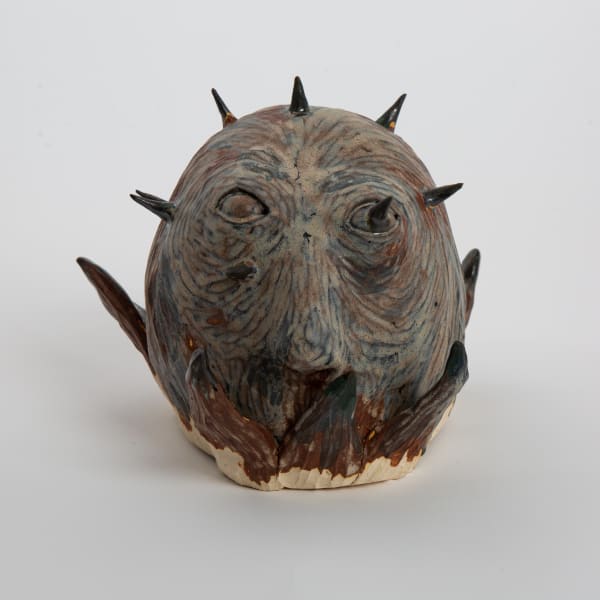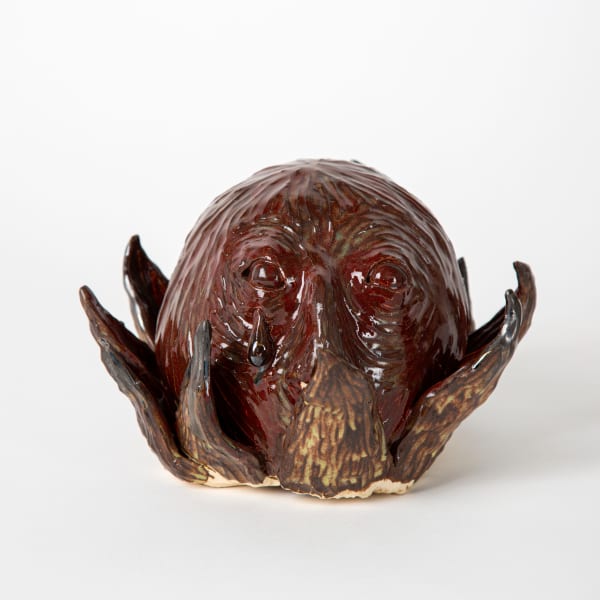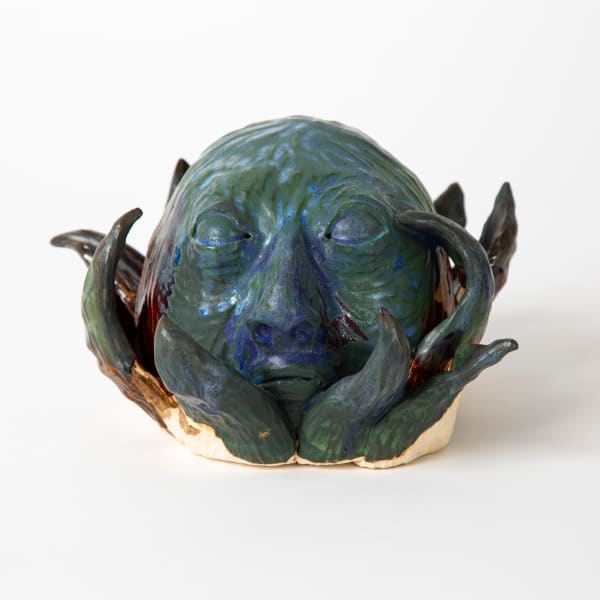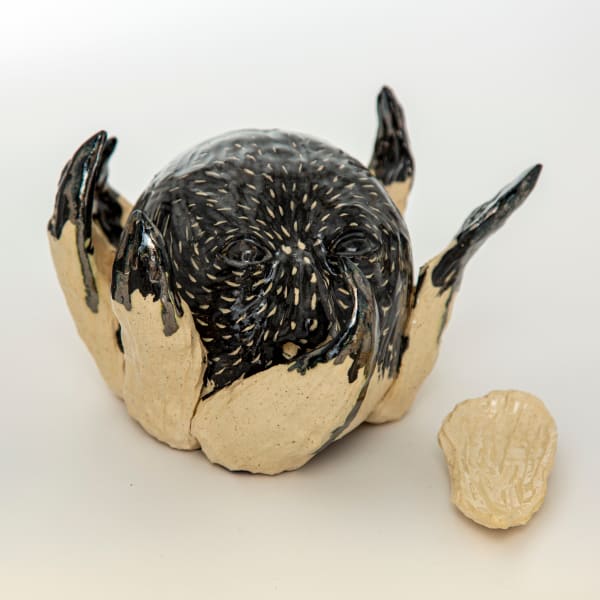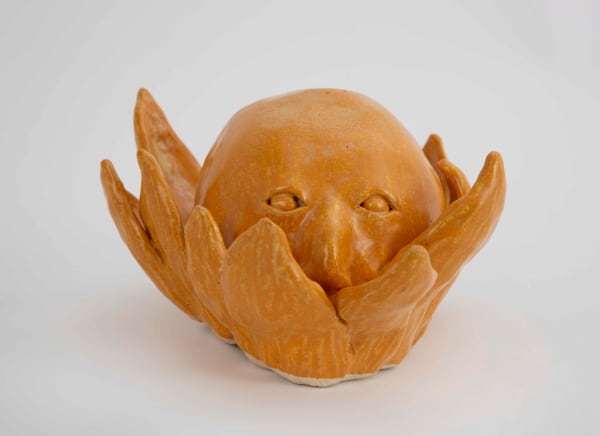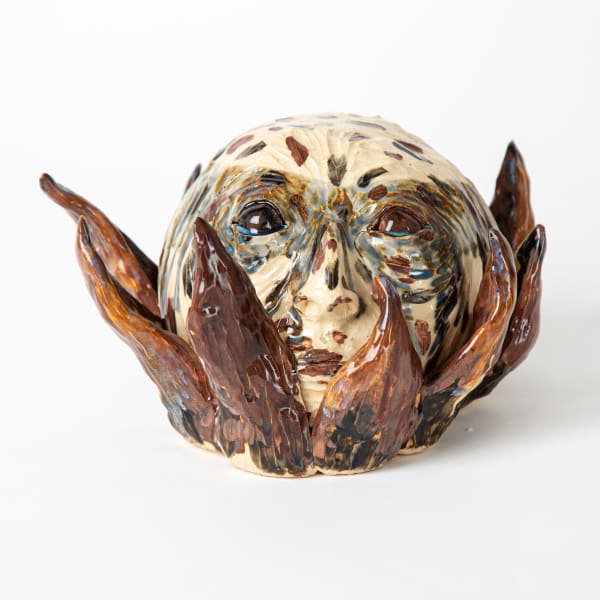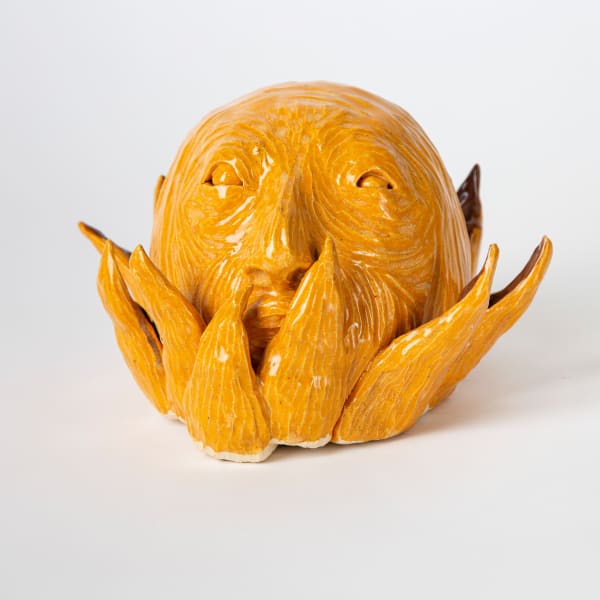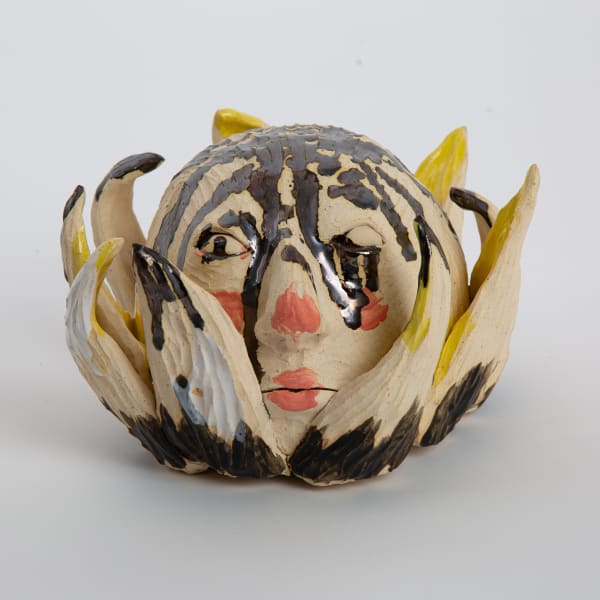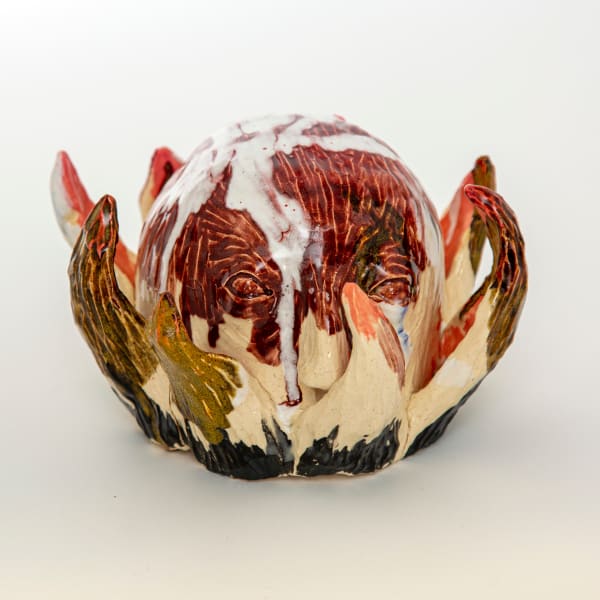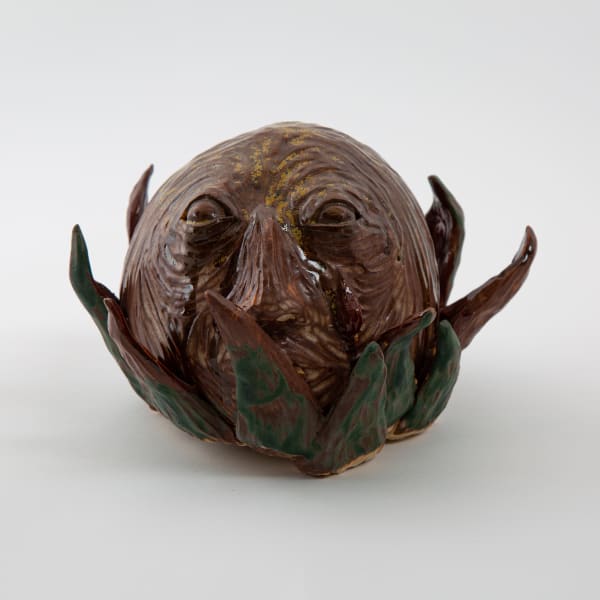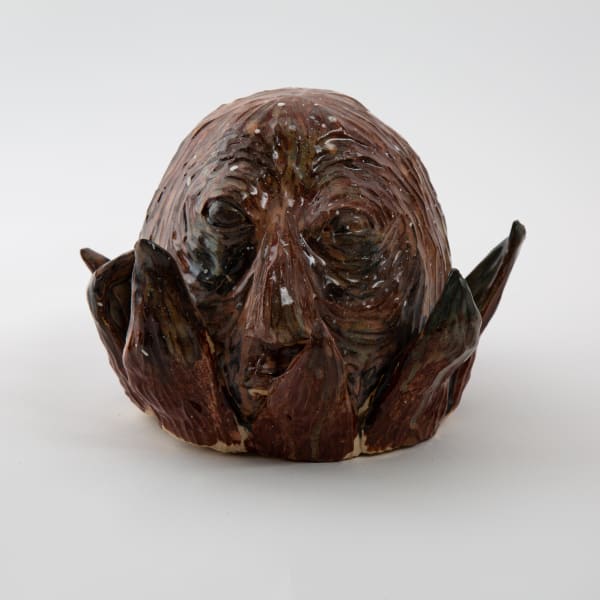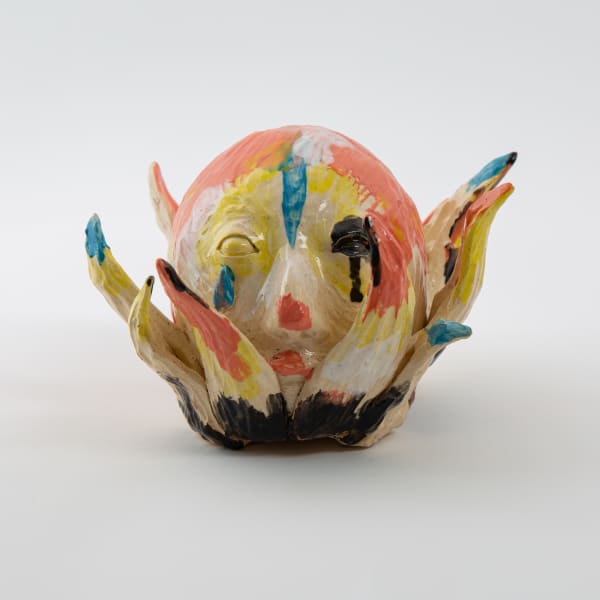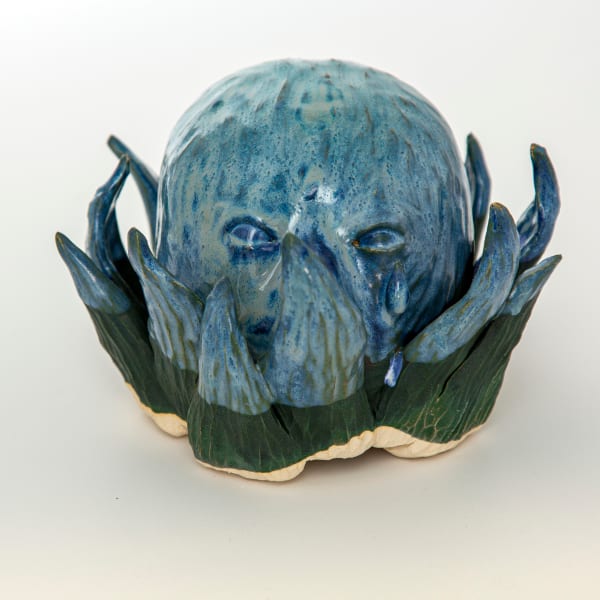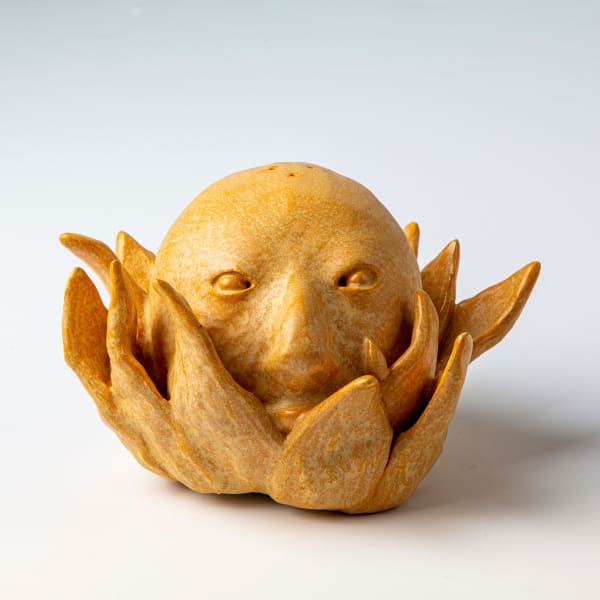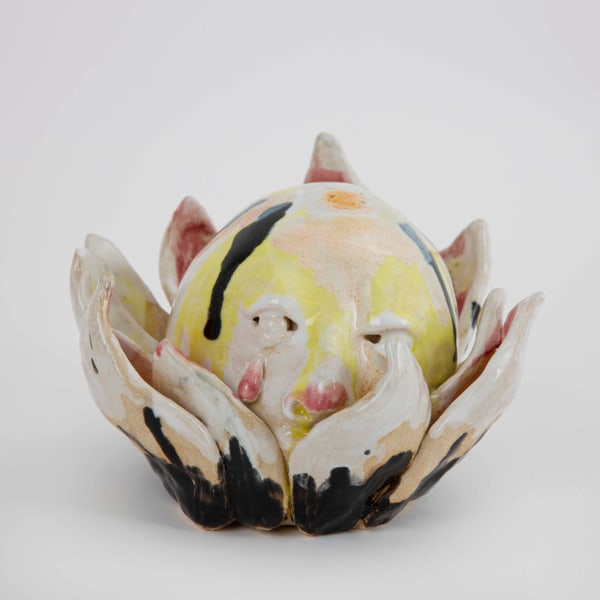In Noormah Jamal’s universe, beards grow green from men's faces like sprouts in a garden. Matisse's Dance is actually an atan, a Pakhtun folk dance. Women, persevering through hardship, sprout from the earth. Immigrants, seeking new possibilities, spring forward from the walls; what some people see as weeds, others see as flowers. From the soil of conflict and loss, hope grows and blooms, ready to be plucked and birthed into the world. To experience Noormah’s paintings and ceramics is to be transported into another world, where girlhood imagination overtakes the structures of logic and power.
Noormah Jamal is a young artist from Peshawar, Pakistan, now based in Brooklyn. Her work centralizes her experience of girlhood memories in the region, wanting to reclaim her childhood sense of wonder and fantasy. Her work imagines a realm at the intersection of nostalgia and girlhood imagination, where youthful (mis)understandings of the world colorfully create a world of fantasy and possibility.
Peshawar, near Pakistan's border with Afghanistan, is known as the "City of Flowers," but has largely gone dry. In lieu of the gardens of Peshawar's past, Noormah imagines those who have endured the traumas and hardships of Peshawar, particularly young women, as the flowers of the city--blooming and thriving in troubled earth.
While gesturing to the difficult political realities in Peshawar, especially for girls growing up in the region, Noormah's paintings have a deep sense of optimism and affection. Her work engages with folktales from Pakhtun culture, and ultimately finds a new visual language for nostalgia that celebrates girlhood through Noormah's signature aesthetic practice. Composed of deliberate directional brushstrokes, Noormah's mark-making evokes the sensation of memory. Her directional mark-making evokes a dreamlike reflection on the past--simultaneously loose and precise, fuzzy and solid. Noormah's works find a deep sense of maturity and reflection by embracing rather than outgrowing her younger self.
Across painting and ceramics, Noormah’s practice finds a beautiful intersection between sociopolitical and personal storytelling, and a wholly singular assertion of her aesthetic perspective. While rooted in Peshawar and her specific childhood experiences, her signature style presents a universal and deeply human tribute to the persistence and resilience of young women.
ARTIST STATEMENT:
"My work is an ongoing exploration of identity, memory, and the stories that shape both the individual and the collective. Rather than offering definitive answers, I engage with these themes through a process of discovery, seeking to uncover and examine the hidden emotions and untold narratives that often go unnoticed. Drawing from the oral histories of my community and my personal experiences, I use color, symbolism, and texture to create layers of meaning that invite reflection and inquiry.
A key element of my practice is approaching my work through the lens of a child’s perspective—unfiltered, curious, and open to possibility. In my process, I often find myself engaging in a dialogue with younger versions of myself, blending their unguarded view of the world with the knowledge and experiences I’ve gained over time. This interaction between past and present serves as a way of building new narratives, exploring the intersections of personal history and the broader cultural context.
Trained in the tradition of Mughal miniature painting, I adapt its intricate techniques to develop my own unique language and form of making. The fine, purposeful linework typical of this tradition is reinterpreted to reflect movement, energy, and a sense of urgency, as I seek to convey both the delicate and the dynamic aspects of human existence. This blend of historical form and contemporary sensibility allows me to explore themes of growth, transformation, and the passage of time.
At the core of my work is a desire to create space for dialogue—between past and present, between individual experience and collective memory. I view my practice as a means of uncovering complex layers of meaning and inviting viewers into a process of reflection. Through my art, I aim to create a space where both vulnerability and strength can coexist, and where the often-overlooked aspects of human experience are given a platform for exploration and understanding."
-
 Noormah JamalGhabrana nahe hai (dont be scared), 2025Acrylic and pencil colours on canvas70 x 54 in
Noormah JamalGhabrana nahe hai (dont be scared), 2025Acrylic and pencil colours on canvas70 x 54 in -
 Noormah JamalMeena/ Veena ( Love and Blood), 2025Acrylic and pencil colours on canvas64 x 48 in
Noormah JamalMeena/ Veena ( Love and Blood), 2025Acrylic and pencil colours on canvas64 x 48 in -
 Noormah JamalAdey (Grandmother), 2025Acrylic and pencil colours on canvas52 x 51 in
Noormah JamalAdey (Grandmother), 2025Acrylic and pencil colours on canvas52 x 51 in -
 Noormah JamalRuksana, 2025Acrylic and pencil colours on canvas30 x 27 in
Noormah JamalRuksana, 2025Acrylic and pencil colours on canvas30 x 27 in -
 Noormah JamalFarhana, 2025Acrylic and pencil colours on canvas30 x 27 in
Noormah JamalFarhana, 2025Acrylic and pencil colours on canvas30 x 27 in -
 Noormah JamalLubna, 2025Acrylic and pencil colours on canvas30 x 27 in
Noormah JamalLubna, 2025Acrylic and pencil colours on canvas30 x 27 in -
 Noormah JamalZarbaba, 2025Acrylic and pencil colours on canvas40 x 30 in
Noormah JamalZarbaba, 2025Acrylic and pencil colours on canvas40 x 30 in -
 Noormah JamalBeghe Beybey (beybey's garden), 2025Gouache and colour pencils on wasli paper28 x 22 in
Noormah JamalBeghe Beybey (beybey's garden), 2025Gouache and colour pencils on wasli paper28 x 22 in -
 Noormah JamalBaghe Lubna (Lubna's garden), 2025Gouache and colour pencils on wasli paper28 x 22 in
Noormah JamalBaghe Lubna (Lubna's garden), 2025Gouache and colour pencils on wasli paper28 x 22 in -
 Noormah JamalAtan 1, 2025Gouache and colour pencils on wasli paper20 x 26 in
Noormah JamalAtan 1, 2025Gouache and colour pencils on wasli paper20 x 26 in -
 Noormah JamalAtan 2, 2025Gouache and colour pencils on wasli paper20 x 26 in
Noormah JamalAtan 2, 2025Gouache and colour pencils on wasli paper20 x 26 in -
 Noormah JamalAtan 3, 2025Gouache and colour pencils on wasli paper20 x 26 in
Noormah JamalAtan 3, 2025Gouache and colour pencils on wasli paper20 x 26 in -
 Noormah JamalAtan 4, 2025Gouache and colour pencils on wasli paper20 x 26 in
Noormah JamalAtan 4, 2025Gouache and colour pencils on wasli paper20 x 26 in -
 Noormah JamalAtan 5, 2025Gouache and colour pencils on wasli paper20 x 26 in
Noormah JamalAtan 5, 2025Gouache and colour pencils on wasli paper20 x 26 in -
 Noormah Jamallimbo 1, 2025Gouache and colour pencils on wasli paper
Noormah Jamallimbo 1, 2025Gouache and colour pencils on wasli paper -
 Noormah Jamallimbo 2, 2025Gouache and colour pencils on wasli paper
Noormah Jamallimbo 2, 2025Gouache and colour pencils on wasli paper -
 Noormah Jamallimbo 3, 2025Gouache and colour pencils on wasli paper
Noormah Jamallimbo 3, 2025Gouache and colour pencils on wasli paper -
 Noormah Jamallimbo 4, 2025Gouache and colour pencils on wasli paper
Noormah Jamallimbo 4, 2025Gouache and colour pencils on wasli paper -
 Noormah JamalWEEDS 4, 2025Glazed ceramic9 x 3 x 3.9 in
Noormah JamalWEEDS 4, 2025Glazed ceramic9 x 3 x 3.9 in -
 Noormah JamalWEEDS 6, 2025Glazed ceramic9.6 x 3.1 x 4.5 in
Noormah JamalWEEDS 6, 2025Glazed ceramic9.6 x 3.1 x 4.5 in -
 Noormah JamalWEEDS 21, 2025Glazed ceramic8.3 x 4.2 x 3.6 in
Noormah JamalWEEDS 21, 2025Glazed ceramic8.3 x 4.2 x 3.6 in -
 Noormah JamalWEEDS 10, 2025Glazed ceramic9.5 x 3 x 3.8 in
Noormah JamalWEEDS 10, 2025Glazed ceramic9.5 x 3 x 3.8 in -
 Noormah JamalWEEDS 30, 2025Glazed ceramic9 x 3.5 x 5.8 in
Noormah JamalWEEDS 30, 2025Glazed ceramic9 x 3.5 x 5.8 in -
 Noormah JamalWEEDS 2, 2025Glazed ceramic9.6 x 3.5 x 4.7 in
Noormah JamalWEEDS 2, 2025Glazed ceramic9.6 x 3.5 x 4.7 in -
 Noormah JamalWEEDS 12, 2025Glazed ceramic7.5 x 2.5 x 3.5 in
Noormah JamalWEEDS 12, 2025Glazed ceramic7.5 x 2.5 x 3.5 in -
 Noormah JamalWEEDS 3, 2025Glazed ceramic8 x 3 x 5 in
Noormah JamalWEEDS 3, 2025Glazed ceramic8 x 3 x 5 in -
 Noormah JamalWEEDS 11, 2025Glazed ceramic7.2 x 2.5 x 3.9 in
Noormah JamalWEEDS 11, 2025Glazed ceramic7.2 x 2.5 x 3.9 in -
 Noormah JamalWEEDS 31, 2025Glazed ceramic7.3 x 2.5 x 4 in
Noormah JamalWEEDS 31, 2025Glazed ceramic7.3 x 2.5 x 4 in -
 Noormah JamalWEEDS 22, 2025Glazed ceramic5.5 x 2.5 x 6.1 in
Noormah JamalWEEDS 22, 2025Glazed ceramic5.5 x 2.5 x 6.1 in -
 Noormah JamalBlooms 36, 2025Glazed ceramic5.5 x 9.1 x 8.5 in
Noormah JamalBlooms 36, 2025Glazed ceramic5.5 x 9.1 x 8.5 in -
 Noormah JamalBlooms 35, 2025Glazed ceramic5.2 x 5.2 x 6.5 in
Noormah JamalBlooms 35, 2025Glazed ceramic5.2 x 5.2 x 6.5 in -
 Noormah JamalBlooms 34, 2025Glazed ceramic6 x 9 x 10 in
Noormah JamalBlooms 34, 2025Glazed ceramic6 x 9 x 10 in -
 Noormah JamalBlooms 33, 2025Glazed ceramic6.4 x 10.4 x 9.5 in
Noormah JamalBlooms 33, 2025Glazed ceramic6.4 x 10.4 x 9.5 in -
 Noormah JamalBlooms 32, 2025Glazed ceramic8.2 x 7.5 x 8 in
Noormah JamalBlooms 32, 2025Glazed ceramic8.2 x 7.5 x 8 in -
 Noormah JamalBlooms 30, 2025Glazed ceramic6.9 x 8.3 x 9.5 in
Noormah JamalBlooms 30, 2025Glazed ceramic6.9 x 8.3 x 9.5 in -
 Noormah JamalBlooms 29, 2025Glazed ceramic7.4 x 7 x 9.7 in
Noormah JamalBlooms 29, 2025Glazed ceramic7.4 x 7 x 9.7 in -
 Noormah JamalBlooms 28, 2025Glazed ceramic5.2 x 7 x 7.9 in
Noormah JamalBlooms 28, 2025Glazed ceramic5.2 x 7 x 7.9 in -
 Noormah JamalBlooms 26, 2025Glazed ceramic6 x 5.3 x 5.8 in
Noormah JamalBlooms 26, 2025Glazed ceramic6 x 5.3 x 5.8 in -
 Noormah JamalBlooms 25, 2025Underglazed ceramic5.7 x 8.5 x 7 in
Noormah JamalBlooms 25, 2025Underglazed ceramic5.7 x 8.5 x 7 in -
 Noormah JamalBlooms 24, 2025Glazed ceramic6.9 x 8.6 x 8.8 in
Noormah JamalBlooms 24, 2025Glazed ceramic6.9 x 8.6 x 8.8 in -
 Noormah JamalBlooms 23, 2025Glazed ceramic7 x 8.4 x 8.2 in
Noormah JamalBlooms 23, 2025Glazed ceramic7 x 8.4 x 8.2 in -
 Noormah JamalBlooms 22, 2025Glazed ceramic6.3 x 9.5 x 10.5 in
Noormah JamalBlooms 22, 2025Glazed ceramic6.3 x 9.5 x 10.5 in -
 Noormah JamalBlooms 21, 2025Glazed ceramic6 x 9.6 x 9.4 in
Noormah JamalBlooms 21, 2025Glazed ceramic6 x 9.6 x 9.4 in -
 Noormah JamalBlooms 19, 2025Glazed ceramic4.5 x 6.5 x 6.8 in
Noormah JamalBlooms 19, 2025Glazed ceramic4.5 x 6.5 x 6.8 in -
 Noormah JamalBlooms 18, 2025Glazed ceramic5.2 x 8.4 x 8.7 in
Noormah JamalBlooms 18, 2025Glazed ceramic5.2 x 8.4 x 8.7 in -
 Noormah JamalBlooms 17, 2025Glazed ceramic5.2 x 8 x 9 in
Noormah JamalBlooms 17, 2025Glazed ceramic5.2 x 8 x 9 in -
 Noormah JamalBlooms 16, 2025Glazed ceramic5.9 x 9.5 x 9.1 in
Noormah JamalBlooms 16, 2025Glazed ceramic5.9 x 9.5 x 9.1 in -
 Noormah JamalBlooms 15, 2025Glazed ceramic6.5 x 10.2 x 9.3 in
Noormah JamalBlooms 15, 2025Glazed ceramic6.5 x 10.2 x 9.3 in -
 Noormah JamalBlooms 14, 2025Glazed ceramic5 x 7.9 x 7.7 in
Noormah JamalBlooms 14, 2025Glazed ceramic5 x 7.9 x 7.7 in -
 Noormah JamalBlooms 13, 2025Glazed ceramic5.3 x 7.5 x 8.4 in
Noormah JamalBlooms 13, 2025Glazed ceramic5.3 x 7.5 x 8.4 in -
 Noormah JamalBlooms 12, 2025Glazed ceramic4.5 x 7 x 6.2 in
Noormah JamalBlooms 12, 2025Glazed ceramic4.5 x 7 x 6.2 in -
 Noormah JamalBlooms 11, 2025Glazed ceramic6 x 9.2 x 9 in
Noormah JamalBlooms 11, 2025Glazed ceramic6 x 9.2 x 9 in -
 Noormah JamalBlooms 10, 2025Glazed ceramic7 x 9 x 9.3 in
Noormah JamalBlooms 10, 2025Glazed ceramic7 x 9 x 9.3 in -
 Noormah JamalBlooms 9, 2025Glazed ceramic6.5 x 8 x 8 in
Noormah JamalBlooms 9, 2025Glazed ceramic6.5 x 8 x 8 in -
 Noormah JamalBlooms 8, 2025Glazed ceramic5.7 x 8.5 x 8.8 in
Noormah JamalBlooms 8, 2025Glazed ceramic5.7 x 8.5 x 8.8 in -
 Noormah JamalBlooms 7, 2025Glazed ceramic5.8 x 8.5 x 9.3 in
Noormah JamalBlooms 7, 2025Glazed ceramic5.8 x 8.5 x 9.3 in -
 Noormah JamalBlooms 4, 2025Glazed ceramic4.5 x 7 x 7 in
Noormah JamalBlooms 4, 2025Glazed ceramic4.5 x 7 x 7 in -
 Noormah JamalBlooms 2, 2025Glazed ceramic4.9 x 7 x 7.4 in
Noormah JamalBlooms 2, 2025Glazed ceramic4.9 x 7 x 7.4 in
